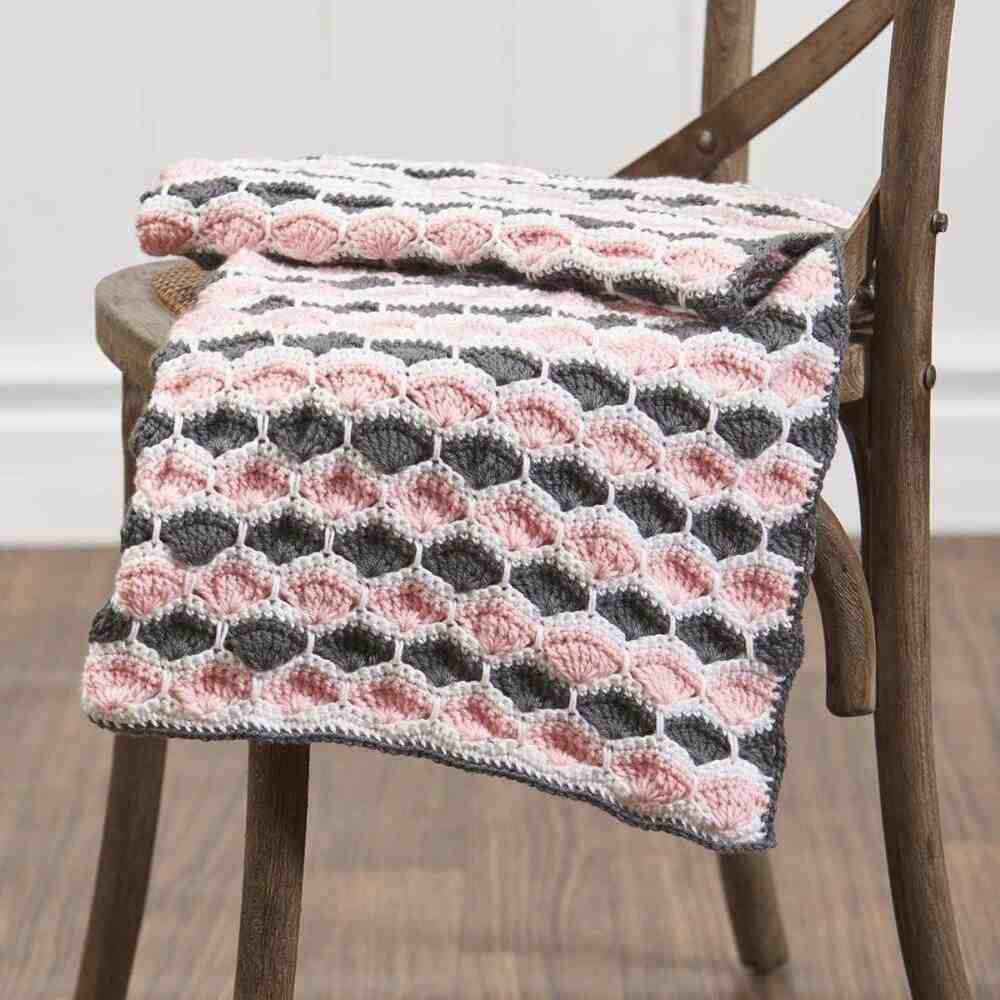A crib blanket is more than just a cozy cover—it’s a symbol of warmth, care, and the beginnings of life. Whether you’re decorating a nursery for a newborn or choosing a thoughtful handmade gift for an expecting friend, a well-chosen blanket adds comfort and personality to any baby crib. It’s one of the first things your baby will be wrapped in, making it both sentimental and essential.
From soft pastels to fun textures and breathable fabrics, a crib blanket plays an important role in both functionality and design. New parents often seek something that provides warmth without overheating, durability without stiffness, and softness without shedding fibers. Thankfully, today’s crib blankets come in various materials and styles to meet those needs beautifully.
Whether store-bought or handcrafted, the ideal crib blanket should be safe, cozy, and practical. It needs to be just the right size—not too big to tangle, not too small to slip off easily. As you explore the possibilities of selecting or creating one, keep in mind the little touches that make a blanket special: the edging, the material, and the story it carries.

Choosing the Right Material for a Crib Blanket
The first step to finding or making the perfect crib blanket is selecting the right material. Babies have delicate skin, so softness is a top priority. Natural fibers like cotton and bamboo are commonly used due to their breathability and hypoallergenic properties. Organic cotton, in particular, is a popular choice among eco-conscious parents.
Another great option is fleece. It’s incredibly soft, lightweight, and warm, making it suitable for cooler climates. While not as breathable as cotton, fleece does provide great insulation and is gentle on sensitive skin. It’s also easy to care for, which is a big plus for busy parents.
Some handmade blankets use a blend of cotton and acrylic yarns. This combination offers durability and softness while being budget-friendly. When crocheting or knitting your own crib blanket, always look for baby-safe yarns specifically labeled as suitable for infants.
Wool is rarely recommended for crib blankets, especially for newborns, due to the possibility of irritation and overheating. However, if used, it should be a very fine, soft wool like merino, and used cautiously in colder months.
Beyond fabric type, the feel of the blanket matters. Some parents prefer textured blankets with bobbles or ridges to stimulate touch, while others want a smooth, consistent surface. Whatever your preference, always prioritize comfort and safety.
Finally, consider the washability of the material. Since crib blankets are used frequently and often exposed to spills and accidents, they must be easy to clean. Machine-washable options with low-shrinkage properties are ideal for everyday use.
Safety Considerations for Crib Blankets
When it comes to anything baby-related, safety should never be compromised, and crib blankets are no exception. One of the most important considerations is size. A good rule of thumb is to keep the blanket around 30 x 40 inches—large enough to cover the baby, but not so big that it creates a suffocation hazard.
Blankets should be free of loose threads, beads, or decorative buttons that a baby could pull off and put in their mouth. Smooth edges or tightly finished crochet borders are not only stylish but safer for little hands and faces.
Avoid heavy or thick quilts for newborns, especially in the first 12 months. Babies can easily overheat, and a lightweight crib blanket is typically all they need. Layers can always be added with clothing or sleep sacks if needed.
It’s also recommended to use crib blankets only during supervised naps or tummy time during the first year. For sleeping, pediatricians suggest keeping the crib clear of blankets, pillows, and toys to reduce the risk of SIDS (Sudden Infant Death Syndrome). Always follow safe sleep guidelines when using any bedding item.
Choose materials that meet fire-safety regulations and are free from harmful chemicals. Labels that confirm OEKO-TEX certification or organic processing standards are helpful indicators of safe fabrics.
Finally, ensure the blanket stays secure when used. Tuck it under the crib mattress if necessary or use it during cuddle time rather than during sleep. Understanding how and when to use the crib blanket safely makes all the difference.
Design Ideas and Personalization for Crib Blankets
Designing a crib blanket opens a world of creativity. Whether you’re buying one or making it yourself, you have the chance to personalize it in ways that make it feel truly special. Colors, textures, and patterns all contribute to its charm.
A simple color scheme like soft grays, pinks, or mint green can bring a calm, modern look to the nursery. Alternatively, you can use playful tones like yellow, coral, or turquoise to inject personality and energy into the space.
Pattern choices are endless. Classic chevrons, stripes, polka dots, or animal themes are popular and timeless. For crocheters or knitters, granny squares, shell stitches, and ripple patterns can be combined to create one-of-a-kind designs. The right pattern can make your crib blanket look like a piece of art.
Personalization is a beautiful way to make a blanket more meaningful. Adding the baby’s name, initials, or birthdate through embroidery or stitched letters gives the blanket sentimental value that lasts a lifetime.
Textures also make a big impact. Mixing different stitch techniques or adding fringe, scalloped edges, or a fluffy border can elevate the design. However, always ensure that any added elements are baby-safe.
Some parents even like to coordinate the crib blanket with the overall theme of the nursery—whether it’s woodland animals, space, safari, or rainbows. It creates a cohesive and thoughtful atmosphere that both parents and baby enjoy.
Handmade or custom-designed crib blankets make wonderful gifts as well. They show effort, love, and intention—perfect for baby showers, new arrivals, or even as heirloom keepsakes passed through generations.
How to Care for Your Crib Blanket
Once you’ve found or made the perfect crib blanket, knowing how to care for it ensures it stays soft, clean, and safe for your baby. Proper care depends largely on the fabric used, but general best practices apply to all baby blankets.
Start by checking any tags or care instructions if available. Most baby-friendly blankets are machine washable, but some may require a delicate cycle or air drying to prevent shrinkage or wear. Always use a gentle detergent that’s free from dyes and fragrances.
Avoid using fabric softeners or bleach, as these can irritate a baby’s skin and damage the fibers. Instead, opt for natural washing agents and make sure the blanket is rinsed thoroughly.
Drying is just as important. While some materials can handle a dryer, it’s often better to air dry the crib blanket to maintain its shape and texture. If using a dryer, use a low-heat setting and remove the blanket while it’s still slightly damp.
Store the blanket in a clean, dry space when not in use. Avoid plastic bags, which can trap moisture and lead to mold. A breathable fabric bag or a nursery drawer works best.
Regular washing is important, especially during the early months when accidents are frequent. Aim to wash the crib blanket weekly or whenever it’s visibly soiled to maintain hygiene.
Lastly, check the blanket regularly for wear and tear. Loose threads, holes, or thinning fabric should be repaired or replaced promptly to ensure your baby’s safety and comfort.
Crib Blanket
1. What is the ideal size for a crib blanket?
A standard crib blanket size is about 30 x 40 inches. This provides enough coverage without being too bulky or posing a safety risk.
2. What is the safest fabric for a crib blanket?
100% cotton is often considered the safest and most breathable fabric. It’s gentle on the skin and easy to care for. Bamboo is another good alternative.
3. Can newborns sleep with a crib blanket?
Experts recommend that babies under 12 months sleep without loose blankets. Use the crib blanket during supervised time or tummy time only.
4. How often should I wash a crib blanket?
At least once a week or whenever it becomes soiled. Babies are prone to spills and accidents, so cleanliness is essential.
5. Can I crochet my own crib blanket?
Yes! Many people make beautiful handmade crib blankets. Just be sure to use baby-safe yarn and avoid loose decorations.
6. What is the difference between a crib blanket and a receiving blanket?
A receiving blanket is usually lighter and smaller, ideal for swaddling, while a crib blanket is thicker and used for warmth or decoration.
A crib blanket is one of the most cherished and practical items in a nursery. It brings warmth, security, and beauty to your baby’s space while offering countless opportunities for personalization and creativity. Whether store-bought or handmade, what matters most is that it’s soft, safe, and made with love.
In this article, we explored how to choose the right materials, design ideas, safety tips, and care instructions to help you make the best choice. Now it’s your turn—whether you’re shopping or crocheting, may your crib blanket journey be full of joy.
If you enjoyed this guide, feel free to share your thoughts. We’d love to hear your honest opinion and any suggestions for future topics. Happy crafting and parenting!
